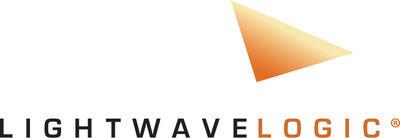Lightwave Logic Announces Publication of U.S. Patent Application for Novel Hybrid Silicon Photonics Polymer Modulator Fabrication Process
Lightwave Logic has announced a U.S. patent application for a novel fabrication process aimed at enhancing polymer modulator manufacturing integrated with silicon photonics. This patent enables high-volume foundry potential by allowing stable, high-yielding poling of polymer devices. CEO Michael Lebby stated this innovation is essential for scaling processes in silicon foundries. The patent positions Lightwave's polymers as critical components for next-generation pluggable fiber optic transceivers, facilitating faster data transfer across the internet, enhancing overall connectivity.
- Patent application for a novel fabrication process could enhance manufacturing capabilities.
- Enables high-volume production of polymer modulators integrated with silicon photonics.
- Potentially positions Lightwave's technology as essential for future internet infrastructure.
- None.
Company Secures Patent Application for Novel Fabrication Process to Advance High-Volume Foundry Potential; Enables Stable, High Yielding Poling of Polymer Devices with Silicon Photonics Circuits
ENGLEWOOD, Colo., June 21, 2022 /PRNewswire/ -- Lightwave Logic, Inc. (NASDAQ: LWLG), a technology platform company leveraging its proprietary electro-optic polymers to transmit data at higher speeds with less power, today announced the publication of a U.S. patent application on a new invention that will enhance polymer modulator manufacturing in high-volume foundries when integrated with silicon photonics.
This patent application – entitled "Hybrid electro-optic polymer modulator with silicon photonics" under publication number 2022/0187637A1 – details a novel fabrication process that allows Lightwave Logic's proprietary polymers to be fabricated by silicon foundries in a high-volume manufacturing environment. The published patent application also details a more efficient process that allows for high yielding, high stability poling of polymers in a high-volume foundry manufacturing environment. The development of the PDK for this new optical hybrid optical modulator design is now in progress with Lightwave Logic's foundry partners.
Dr. Michael Lebby, Chief Executive Officer of Lightwave Logic, commented: "This patent application is incredibly powerful in that it better enables our polymers to be fabricated in high-volumes by our silicon foundry partners, all using their existing equipment. While we already have reliable and stable fabrication processes such as poling, we also need to be comfortable that we can scale these processes for high-volume manufacturing. I see this published patent application as another critical step towards the maturity of polymer technologies both as a photonics integrated platform as well as a volume-scale technology.
"This patent allows our polymer technology platform to become the engine for pluggable fiber optic transceivers that are being utilized throughout today's internet infrastructure. Enabling foundries to also establish a high-yielding, highly stable fabrication process that includes poling is critical to positively change the internet and enable faster data transfer – thus improving the lives of countless millions who rely on the internet for work and leisure," concluded Lebby.
Lightwave Logic, Inc. (NASDAQ: LWLG) is developing a platform leveraging its proprietary engineered electro-optic (EO) polymers to transmit data at higher speeds with less power. The company's high-activity and high-stability organic polymers allow Lightwave Logic to create next-generation photonic EO devices, which convert data from electrical signals into optical signals, for applications in data communications and telecommunications markets. For more information, please visit the company's website at lightwavelogic.com.
The information posted in this release may contain forward-looking statements within the meaning of the Private Securities Litigation Reform Act of 1995. You can identify these statements by use of the words "may," "will," "should," "plans," "explores," "expects," "anticipates," "continue," "estimate," "project," "intend," and similar expressions. Forward-looking statements involve risks and uncertainties that could cause actual results to differ materially from those projected or anticipated. These risks and uncertainties include, but are not limited to, lack of available funding; general economic and business conditions; competition from third parties; intellectual property rights of third parties; regulatory constraints; changes in technology and methods of marketing; delays in completing various engineering and manufacturing programs; changes in customer order patterns; changes in product mix; success in technological advances and delivering technological innovations; shortages in components; production delays due to performance quality issues with outsourced components; those events and factors described by us in Item 1.A "Risk Factors" in our most recent Form 10-K and 10-Q; other risks to which our Company is subject; other factors beyond the company's control.
Investor Relations Contact:
Lucas A. Zimmerman
MZ Group - MZ North America
949-259-4987
LWLG@mzgroup.us
www.mzgroup.us
![]() View original content to download multimedia:https://www.prnewswire.com/news-releases/lightwave-logic-announces-publication-of-us-patent-application-for-novel-hybrid-silicon-photonics-polymer-modulator-fabrication-process-301571990.html
View original content to download multimedia:https://www.prnewswire.com/news-releases/lightwave-logic-announces-publication-of-us-patent-application-for-novel-hybrid-silicon-photonics-polymer-modulator-fabrication-process-301571990.html
SOURCE Lightwave Logic, Inc.
FAQ
What is the significance of the patent application published by Lightwave Logic (LWLG)?
When was Lightwave Logic's patent application announced?
How does Lightwave Logic (LWLG) plan to use the new fabrication process?







